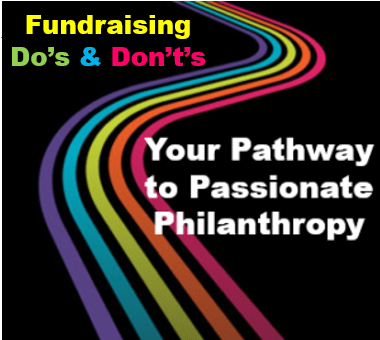10 Reasons Your Nonprofit Needs to Be Texting
 From time to time, I host guest posts from professionals with niche expertise. There are just some things others know a lot more about than do I, especially when it comes to technology. Today’s article is one of those, from someone who really understands the ins and outs of text messaging and fundraising. Here’s what he has to say.
From time to time, I host guest posts from professionals with niche expertise. There are just some things others know a lot more about than do I, especially when it comes to technology. Today’s article is one of those, from someone who really understands the ins and outs of text messaging and fundraising. Here’s what he has to say.
Nonprofits today face many challenges.
You do too! You’re busy and overworked, and the prospect of adding a new channel to your plate is daunting. But what if texting is a strategy that can help your nonprofit overcome some of the problems causing you stress?
- Are people not paying attention to your messaging? People read texts.
- Are your email numbers declining? Text messaging stats are rising.
- Do you need to make things simpler? Texting is as basic as it gets.
You can future-proof your nonprofit by embracing text messaging. Everything is going mobile, and putting a strong texting strategy in place puts you at the center of the action.
Here are 10 reasons why your nonprofit should use text messaging:
1. It’s Where People Are
Watches, phones, tablets, and more—so many people have them, and not only do they have them, they take them everywhere. These little devices have invaded our lives.
- 97% of American professionals are within 3 feet of their mobile devices 24 hours a day.
- 89% check their phones within the first 10 minutes of waking up.
- 75% take their devices to the bathroom, sometimes even falling asleep with them.
- 69% have texted someone in the same room as them.
- People look at their phone 144 times a day.
- 35% said if they could only have one, they’d rather keep their cell phone than their car!
People are on devices, so reach them on a device. After all, a classic marketing mantra is “if you want to reach people, go where they are.” And texting is the best way to do that:
Just look at the open rates: 90-95% for texting vs. 30-35% for email.
DetailsTo do: Generally, more than half of web traffic is from mobile devices. In a mobile world, you need a mobile-first strategy. To persuade yourself and your leadership you should really prioritize this, take a look at your website’s analytics and compare mobile to desktop traffic. It’s time to reach people where they’re at.

 Here comes my occasional “Do’s vs. Don’ts” feature, where I share with you something arriving in my mailbox that seems a good ‘teaching opportunity.’
Here comes my occasional “Do’s vs. Don’ts” feature, where I share with you something arriving in my mailbox that seems a good ‘teaching opportunity.’
